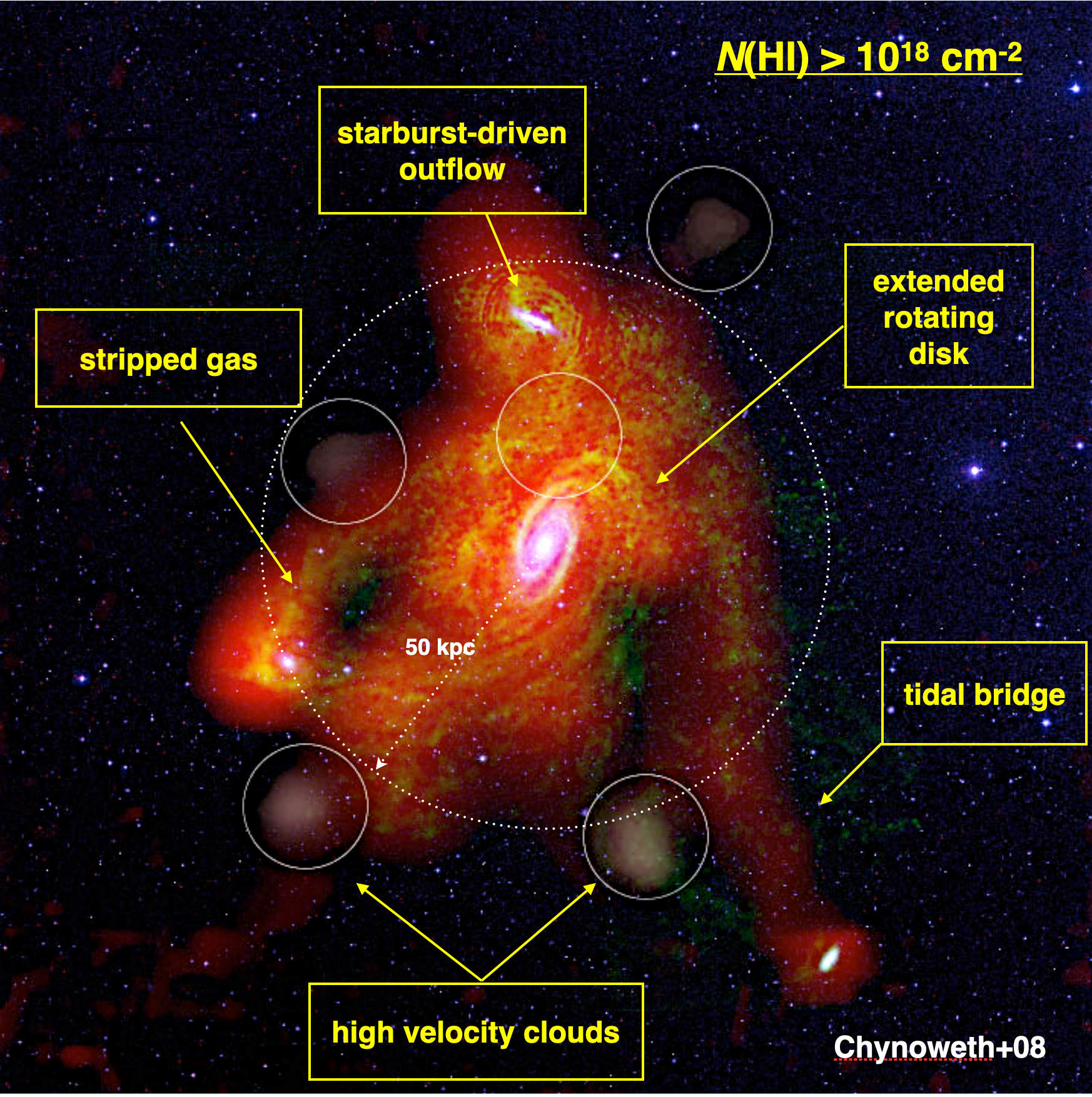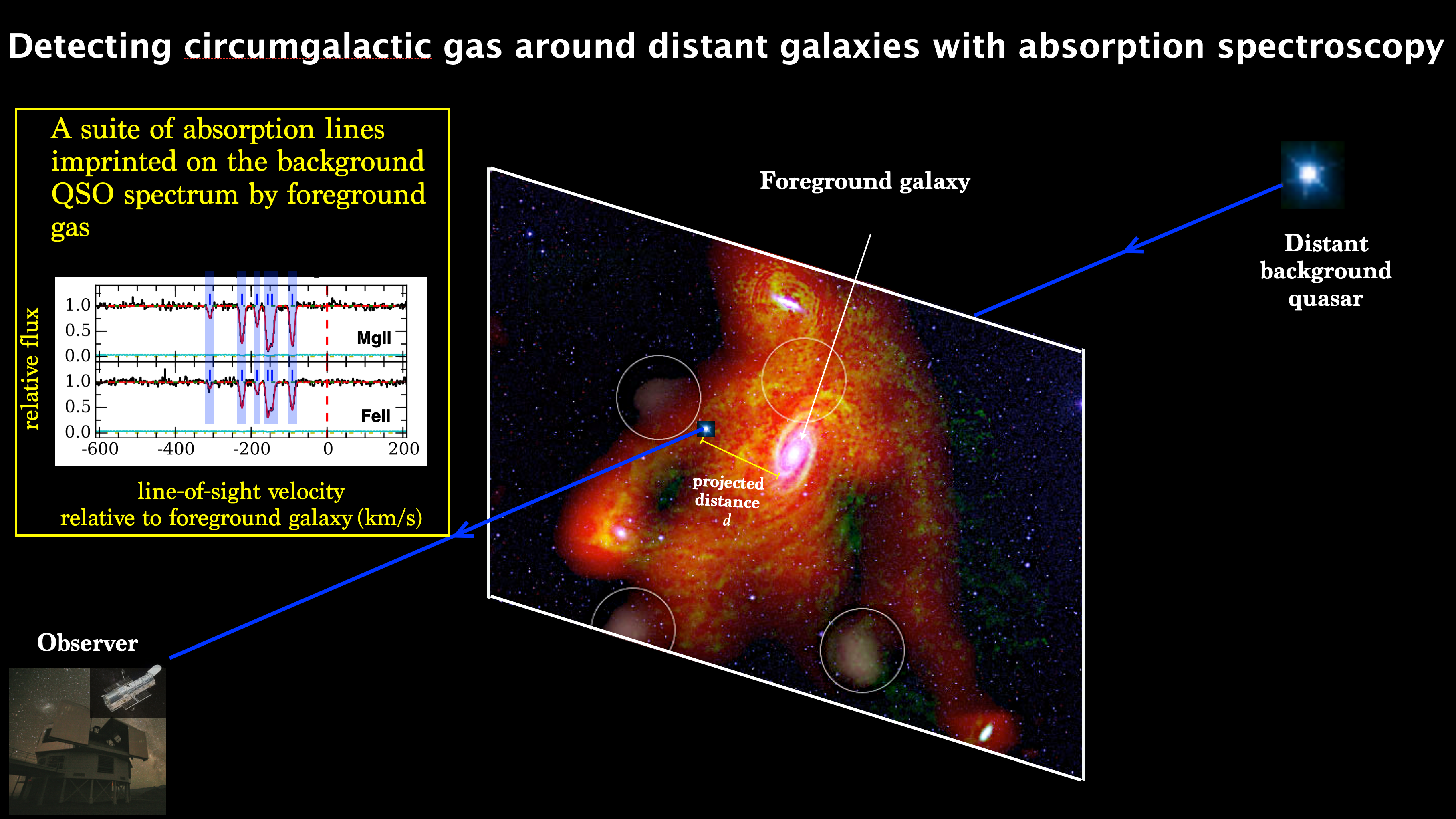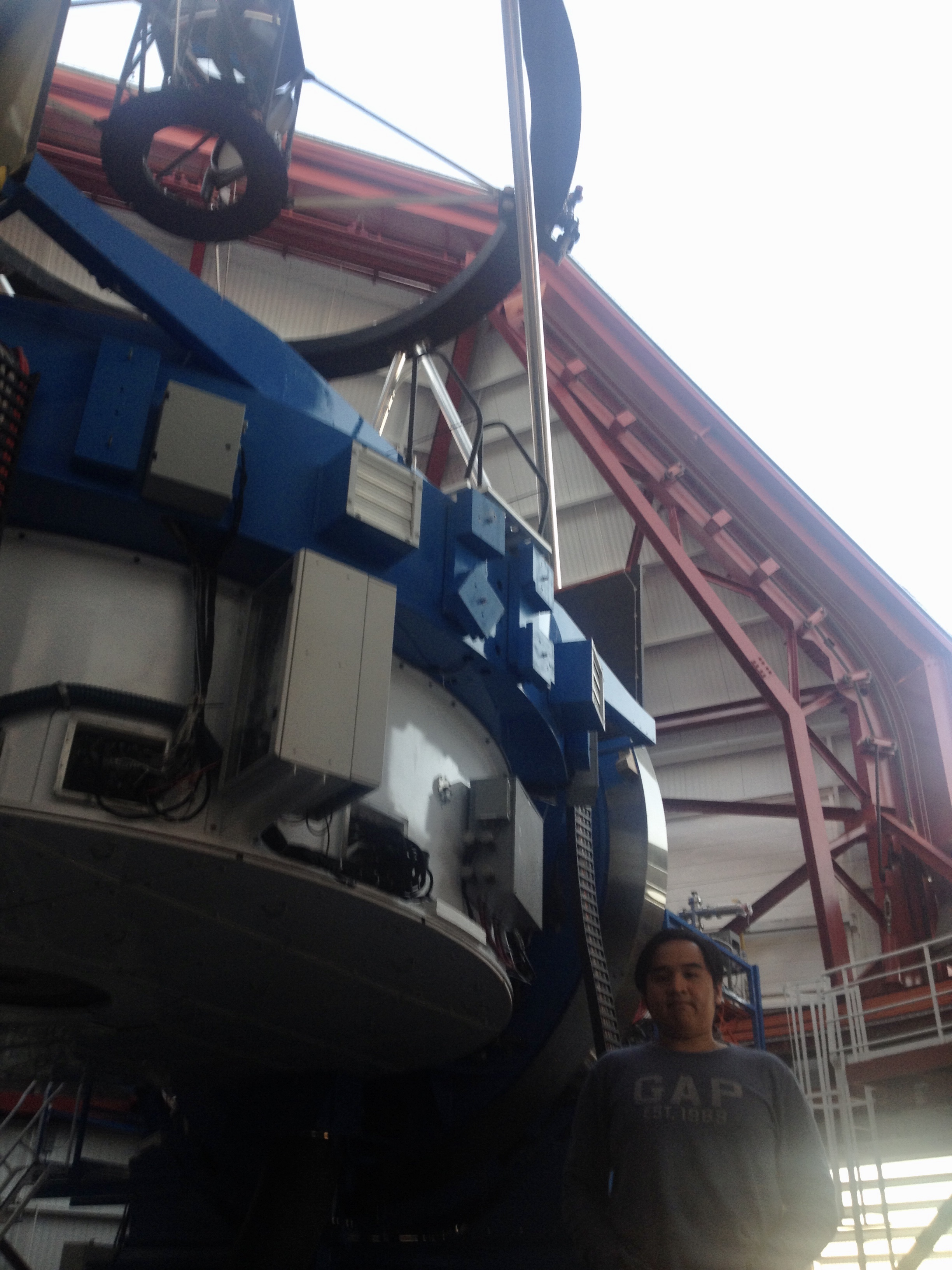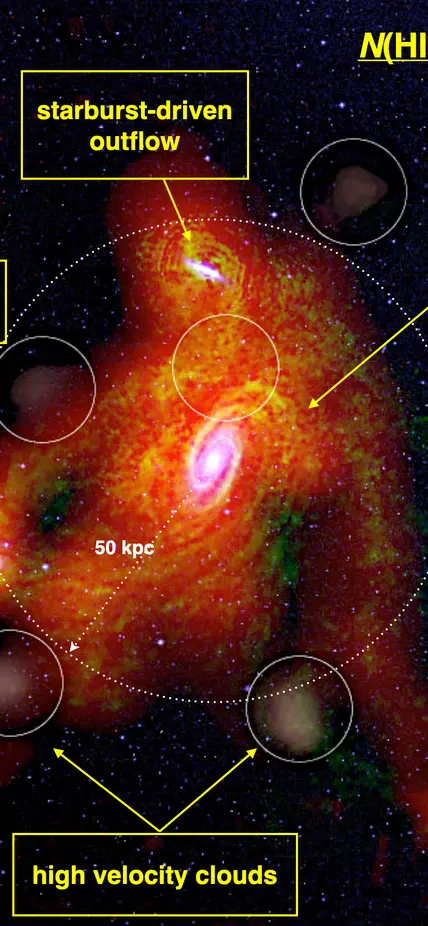What questions are you pursuing in your career?
Galaxies are the primary building blocks of our universe and I’m interested in understanding how they grow over time. The main function of a galaxy is to form stars, which requires a lot of cold gas. A galaxy can either gather gas from its surroundings or by colliding and gravitationally interacting with other galaxies. The typical galaxy is surrounded by about as much gas as it has the total mass of stars in it. Astronomers call this gaseous reservoir the circumgalactic medium.
I am interested in understanding how the circumgalactic medium drives the evolution of galaxies over cosmic time. The relationship between a galaxy and its gas reservoir is complex and we don’t yet have a complete understanding of their interactions. While a galaxy can accrete cold gas to fuel its star formation activity, it can also enrich its reservoir with the heavy elements like oxygen, iron, and gold that are produced by supernova explosions. The circumgalactic medium provides us with a historical record covering the billions of years of galaxy’s life and understanding it is absolutely essential if we want to solve galaxy evolution one day.

How is your research done?
I study the gas surrounding galaxies that are so far away that it took their light many billions of years to reach us. As an astronomer, I get to look back in time and see these galaxies when they were a lot younger. My work is a lot like being an archaeologist because I investigate the gaseous reservoirs of these ancient galaxies to figure out what was going on in their lives back then in order to better understand how they got to where they are now.
However, due to the huge distances involved, I cannot see the gas around these galaxies directly. Their emissions are simply too faint to see directly with our current instruments. Instead, I rely on a technique called quasar absorption spectroscopy. Quasars are bright beacons of light originating from the hot discs surrounding supermassive black holes in the centers of extremely distant galaxies. The spectra of quasars are often littered with dark absorptions, meaning that some wavelengths aren’t getting through. The missing wavelengths represent light absorbed by gas on the outskirts of the distant galaxies in front of the quasar. By studying these dark absorptions in detail, I can learn about the gas around a galaxy, such as its quantity, movement relative to the galaxy, temperature, and chemical composition. I can also infer the origin and fate of this gas, which are the topics most relevant to our understanding of galaxy evolution.

What is one of your biggest discoveries?
I discovered how different heavy elements like iron and magnesium are distributed in the gaseous reservoirs of different types of galaxies. In 2017, I found that the gaseous reservoirs near quiescent galaxies are significantly more iron rich than those around their star-forming counterparts. To illustrate why this is such an exciting finding, I have to mention that quiescent galaxies have puzzled astronomers for many years. In contrast to star-forming galaxies like our own Milky Way, quiescent galaxies no longer form stars and are populated by old stars that formed billions of years ago. It has been speculated that quiescent galaxies do not form stars because they lack the necessary gas reservoirs to do so. However, my previous work showed that many quiescent galaxies are not gas poor. Why is that? The existence of these quiescent galaxies implies that some physical mechanisms prevent their gaseous reservoirs from cooling enough to form stars.
My collaborators and I hypothesized that feedback from a type of stellar explosion called Type Ia supernovae may be the culprit. These are explosions typically found in old stellar populations like those found in quiescent galaxies, and in principle could provide the heating necessary to prevent star formation. Since Type Ia supernovae are the primary producers of iron in the universe, we tested our hypothesis by observing whether the gas reservoirs around quiescent galaxies are more iron rich than those around star-forming galaxies. And that’s exactly what we found! While our discovery was exciting in itself, it also demonstrated that comparing the amounts of different types of heavy elements in the circumgalactic medium can teach us a lot about the chemical enrichment history of galaxies.
When did you realize you were interested in astronomy and what path did you take to get there?
Growing up, I was always interested in science, because I wanted to understand how everything worked. When I was in sixth grade, I joined an amateur astronomy club in my hometown, and my interest in astronomy only grew from there. By the time I started college at MIT, I was strongly considering an astronomy career. I majored in physics to give myself a solid background for a career in astronomy.
While at MIT, I spent a month doing astronomical research at Lowell Observatory in Flagstaff, Arizona. Like Carnegie, Lowell is another institution that is deeply steeped in the history of modern astronomy. While I was there, I studied the distribution of neutral gas in a number of dwarf galaxies. It was my first exposure to galaxy research, but it really cemented my desire to become an astronomer. Moreover, it taught me that studying the gas content of galaxies is key to understanding how galaxies grow and evolve over time. That’s why I chose to focus on the study of the circumgalactic medium when I went to graduate school.

What has the Carnegie Fellowship meant to you?
The Carnegie Observatories is one of the best places anywhere in the world to start one’s astronomy career. The Carnegie Fellowship has given me the opportunity to pursue my own research program, as well as collaborate with the many incredible people who call it home. For example, I’m involved in a large research collaboration with a number of Carnegie astronomers and Postdocs, including Gwen Rudie, John Mulchaey, Michael Rauch, Thomas Cooper, and Greg Walth. We are pursuing an ambitious survey of the co-evolution of galaxies and their gaseous reservoirs over the past eight billion years, which is -- approximately 70 percent the age of the universe. And, of course, who can forget the guaranteed access to the Magellan Telescopes, which I use heavily in my own research program!
